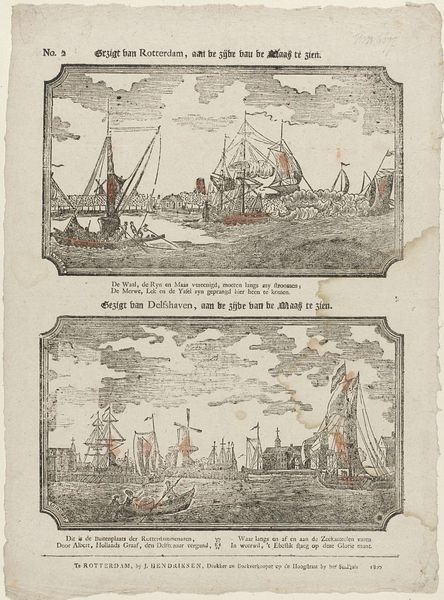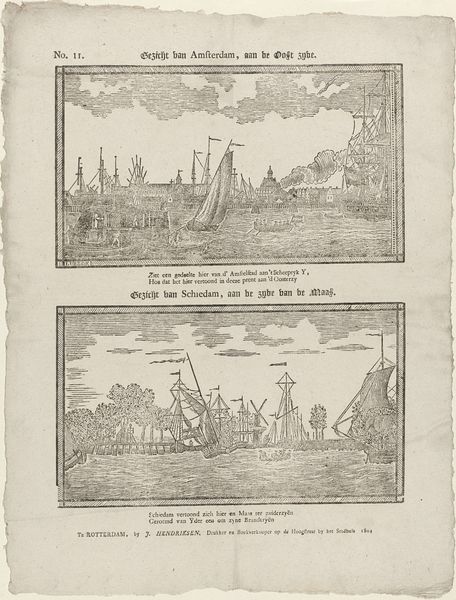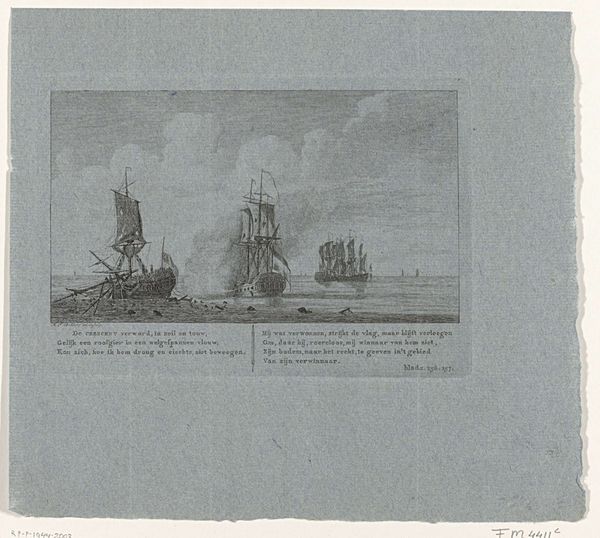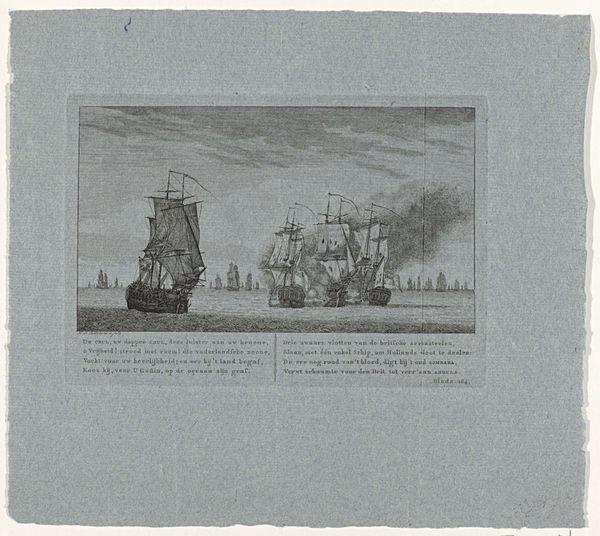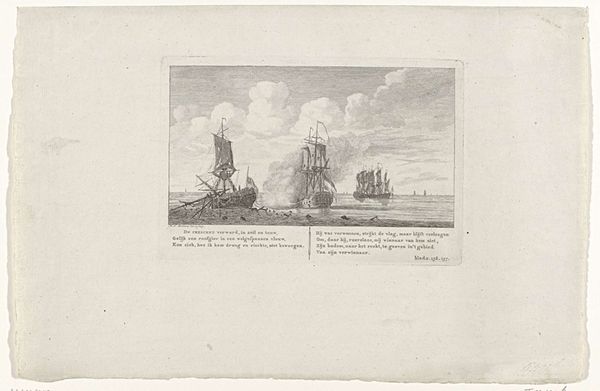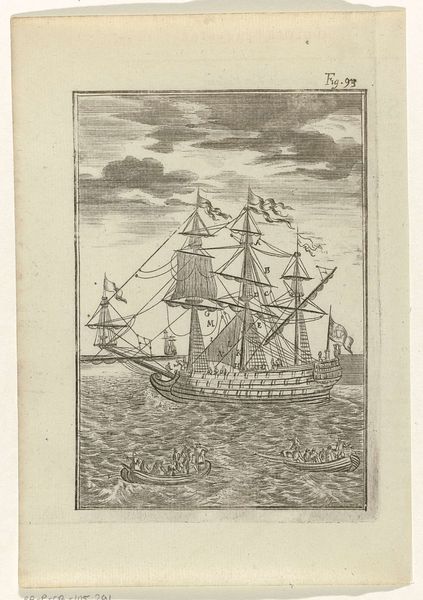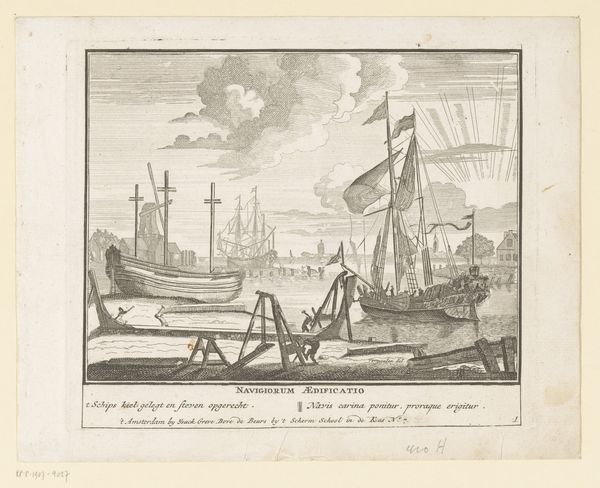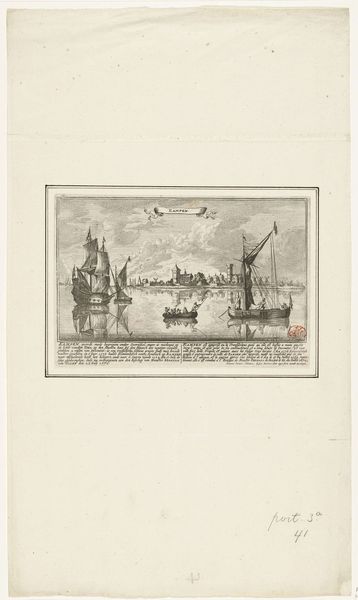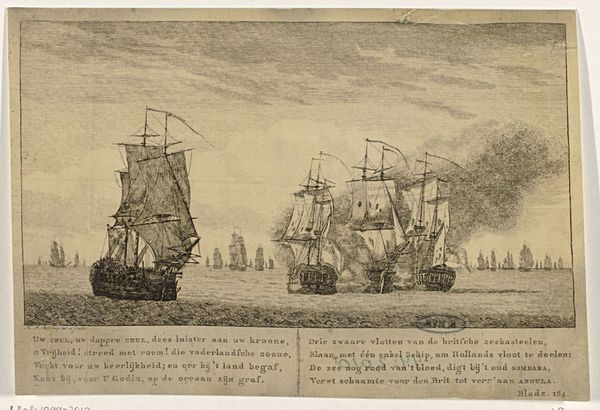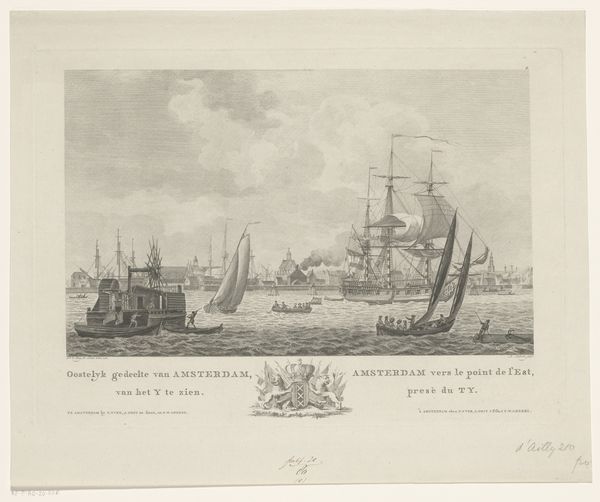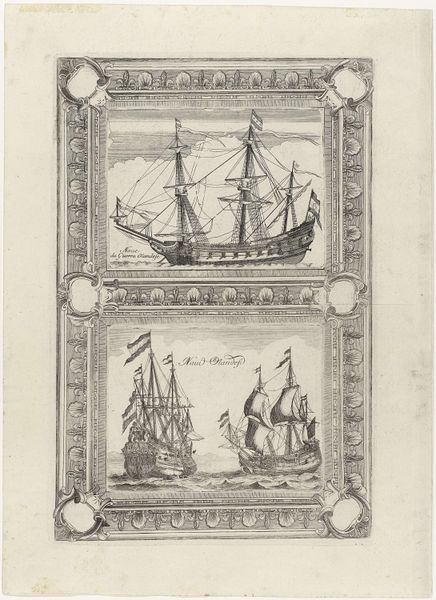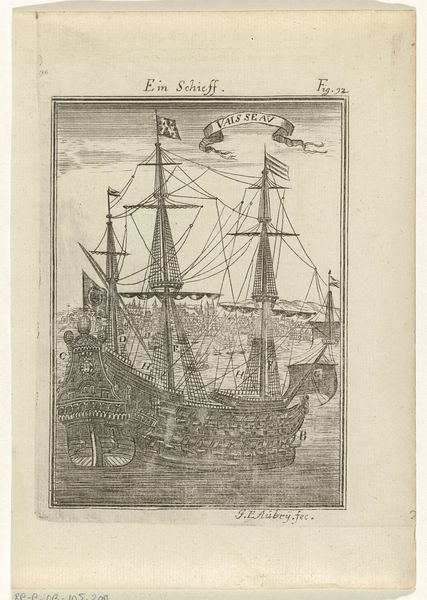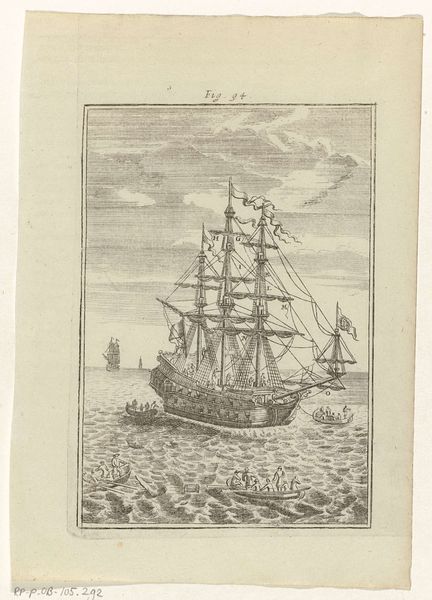
Gezigt van Rotterdam, aan de zijde van de Maas te zien / Gezigt van Delfshaven, aan de zijde van de Maas te zien 1805
0:00
0:00
Dimensions: height 388 mm, width 301 mm
Copyright: Rijks Museum: Open Domain
Curator: This print, "Gezigt van Rotterdam, aan de zijde van de Maas te zien / Gezigt van Delfshaven, aan de zijde van de Maas te zien", made in 1805 by Dirk van Lubeek, is a fascinating example of early 19th-century Dutch printmaking. Two cityscapes rendered in line engraving showcase Rotterdam and Delfshaven as bustling port cities. What strikes you about it? Editor: Well, the detail is impressive given it's a print. The ships seem very important, almost as if they’re characters in a play. What’s interesting to me is the text right under each image—the use of text seems an important part of this work. How should we interpret that? Curator: That’s a key observation. Think about the means of production. This isn't just art for art's sake. Engravings like these were mass-produced. The added text wasn’t merely descriptive; it served a practical function – adding an instructive element and attracting potential buyers in the marketplace. These prints become commodities circulating within a specific economy. This reflects a growing accessibility to images and information, transforming cultural consumption in the 19th century. Who had access to images like this? How were these made and sold? Those are key questions. Editor: So it's less about artistic expression and more about accessibility and commercial exchange? That feels... different from how we often approach art history. Curator: Not necessarily *less* about artistic expression, but *also* about those factors. Consider the labour involved in creating such a detailed engraving, the access to materials, the skill required and compare it to the final selling price. Editor: I never considered that aspect of printmaking from this era. Now I see the ships representing more than just transport; they embody the industry that propelled these cities. Curator: Exactly! We’re invited to consider art in the context of labor, materials, and even marketing strategies. It offers a perspective beyond pure aesthetics. Editor: It’s really opened my eyes to the socio-economic aspects that influence art production and appreciation. Thanks! Curator: My pleasure. Considering the conditions and resources of creation adds depth to any work.
Comments
No comments
Be the first to comment and join the conversation on the ultimate creative platform.
